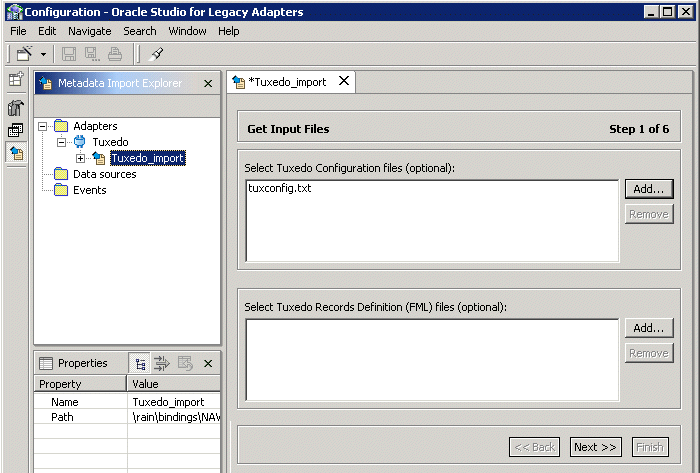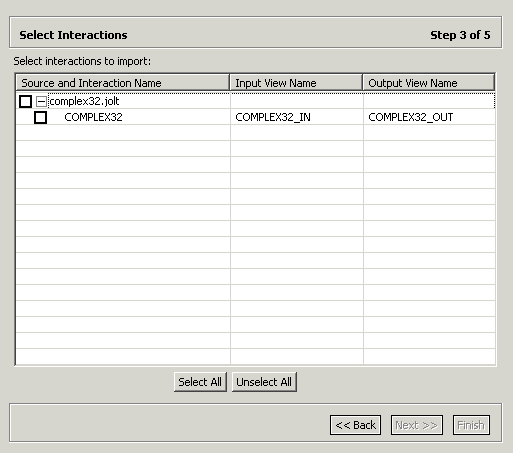|
Oracle® Application Server Adapter Concepts Guide
10g Release 2 (10.1.2) B14058-04 |
|
 Previous |
 Next |
|
Oracle® Application Server Adapter Concepts Guide
10g Release 2 (10.1.2) B14058-04 |
|
 Previous |
 Next |
Using legacy adapters, you can integrate Oracle Application Server with legacy and mainframe applications. These adapters include OracleAS Adapter for Tuxedo, OracleAS Adapter for CICS, OracleAS Adapter for VSAM, OracleAS Adapter for IMS/TM, and OracleAS Adapter for IMS/DB.
This chapter contains the following topics:
Legacy adapters include the following components in the architecture:
Figure 4-1 illustrates the architecture of legacy adapters.
Oracle Connect is a component that resides on the legacy and mainframe platform. It consists of native adapters for communicating with the mainframe application and data stores. Oracle Connect consists of the following components:
Server Processes
Oracle Connect consists of multiple servers to process client requests.
Native Adapters
Oracle Connect consists of various embedded native adapters to communicate with Tuxedo and IMS-TM transaction systems and database drivers to communicate with various databases and file systems on mainframe systems such as VSAM and IMS-DB. The native adapters convert application structures, such as the legacy COBOL applications data, to and from XML. The XSD schema is used for precise mapping between mainframe data and standard XML data.
Daemon
Daemon is an RPC-based listener that manages and maintains multiple server configurations. It runs on every machine running Oracle Connect and handles user authentication and authorization, connection allocation, and server process management.
When a client requests for a connection, the daemon allocates a server process to handle this connection. The allocated server process may be a new process or any process that might have been already running. Further communication between the client session and the server process is direct and does not involve the daemon. However, the daemon is notified when the connection ends and the server process is either killed or being used by another client.
The daemon supports multiple server configurations called workspaces. Each workspace defines accessible data sources, applications, environment settings, security requirements, and server allocation rules. The daemon authenticates clients, authorizes requests for a server process within a certain server workspace, and provides clients with the required servers. The allocation of servers by the daemon is based on the workspace that the client uses. Thus, a client can access a data source using one workspace, where a server process is allocated from an existing pool of servers, or the client can access a data source using a different workspace, where a new server process is allocated for each client request. A fail-safe mechanism enables the specification of alternate daemons, which function as a standby for high availability.
Repository
Oracle Connect supports a repository for storing the XML-based schema and configuration information. There is a single repository for each Oracle Connect instance. The repository stores the following information:
Oracle Connect configuration settings (including the Daemon settings to control client server communication)
User profiles to enable single sign-on to multiple back-end applications and data sources
Adapter metadata for each adapter, which includes adapter Request-Response and event services
Oracle Studio is the design-time tool for configuring the Oracle AS Adapters for mainframes. It enables you to configure the services, events, and connection information for native adapters. The configuration information is stored in the Oracle Connect repository on the legacy or mainframe application. In addition, it enables you to do management and monitoring of Oracle Connect. The Oracle Studio is available only on the Windows platform. The Oracle Studio is based on the IBM Eclipse GUI framework.
The J2EE Connector Architecture (J2CA) adapter forwards the OC4J application client requests to the Oracle Connect application. Oracle Connect communicates with the mainframe application and forwards the response back to the J2CA adapter. The response might contain the transaction data or might contain the exception data if the request generated an error. The Business Process Execution Language for Web Services (BPEL) Process Manager and Oracle Application Server components integrate with Oracle Connect through the J2CA adapter.
To configure legacy adapters during design time use Oracle Studio, as shown in the following figure.
Example 4-1 Configuring OracleAS Adapter for Tuxedo
Using Oracle Studio, you can configure OracleAS adapter for Tuxedo, as shown in Figure 4-3.
Figure 4-3 Configuring OracleAS Adapter for Tuxedo

Figure 4-4 Selecting the Types of Interactions for OracleAS Adapter for Tuxedo

During run time, WSDL files generated during design time are consumed by the integrating components. For example, BPEL Process Manager uses Adapter Framework to integrate the request-response service (J2CA outbound interaction) with a BPEL invoke activity and to publish the events to a BPEL receive activity. For more information, refer to Chapter5, "Adapter Integration with BPEL Process Manager"
The OC4J application client, such as servlet and EJB, uses the Common Client Interface (CCI) API to communicate with the J2CA Adapter. For more information, refer to Chapter5, "Adapter Integration with OC4J".